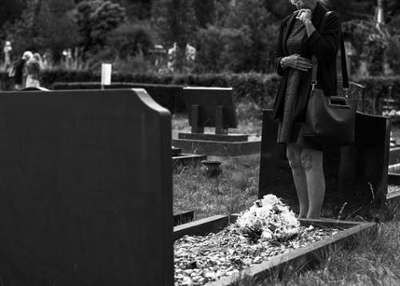I do not mean this in a religious or metaphysical sense, but what happens to us after we die? I am pretty lucky — I’ve never been to a funeral or had a relative die or dealt with that in my immediate family. I definitely know that won’t always be true. But I don’t like being so ignorant of something that affects everybody. I am curious, and because I’m an English major, I can’t exactly find the answers I’m looking for in my reading for class. So, what happens to us? Funerals, burials, cremations, all that stuff: How do they happen?
In general, one of three things happen once people die. First, they are buried; second, they are cremated; or third, they donate their body to medical research and science. We’re going to go over each of these, in detail, to give you a better idea of what happens to you after you die.
Before anything else, though, you should know that none of these three things precludes you from organ donation. More than 113,000 people are on organ donor waiting lists. If you become an organ donor, or persuade somebody else to become one, you can save up to eight lives.
When a person dies, a doctor or attending medical professional has to pronounce the person dead, and then file a form declaring the place, time, and cause of death. This form is then sent to a coroner to record the person’s death. According to WebMD, if family members have a question about the cause of death, they may request an autopsy. States may also require autopsies when a person dies in an unusual or suspicious way. This includes causes of death determined to be public health threats, such as death from tainted food or an epidemic disease.
Traditionally, most people have been buried, and though cremation has become much more common in the past few decades, the trend toward burial remains strong. Once the death has been reported, the family will work with a funeral director to make funeral arrangements, as well as purchase funeral items such as a casket, headstone or plaque, grave liner, and plot. Services such as gravedigging are often arranged by the funeral director as well. After the wake and service, the body is then lowered into the ground and buried at a cemetery.
Cremation, as we’re sure you already know, is the process of burning a body, rather than burying it. Heritage Cremation Provider gives a clear description of the process: “The contained body is placed in a cremation chamber (“retort”) where it is exposed to open flames. Intense heat and evaporation reduce it to fragments within two to three hours. The resulting fragments are then processed further into finer particles.” Afterwards, the ashes are moved to an urn or some other container. Because cremations do not need caskets, plots of land, or the labor to excavate a grave, they are often significantly less costly than burials.
When a body is donated to medical science, a hospital or university will first evaluate the body to determine whether it is appropriate for medical donation. A person who has died because of a transmissible illness such as tuberculosis, for example, wouldn’t make the cut. According to Healthline, if they are approved, the body is then transported to a hospital and embalmed, where they can be kept for as long as two years. Medical students and doctors use donated cadavers for educational purposes — they may practice experimental surgical techniques, test new medical devices, or learn about the various intricacies of the human body through autopsy. To donate your body to science is to donate yourself to the training of the future surgeons and lifesavers of the world. As this article from Vice News UK puts it, doing so acts towards “the benefit not only of the medical students who will use it, but to those who doctors of the future will be helping with skills garnered from it.”
Content Provided by Scholarship Media


